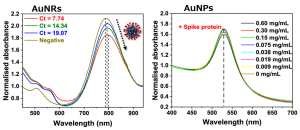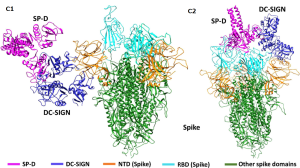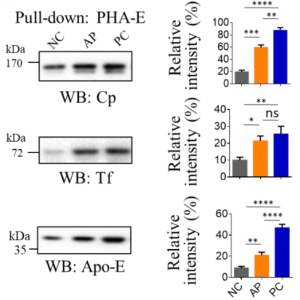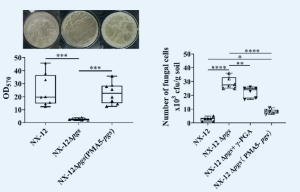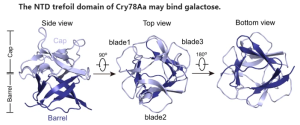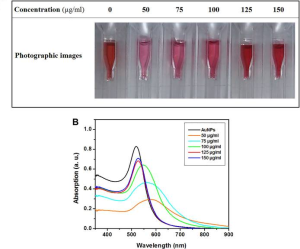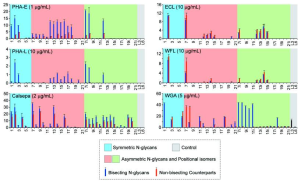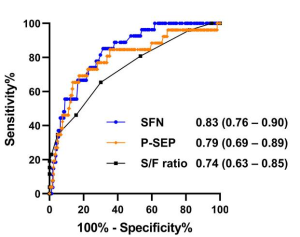Comparison of SPR detection of SARS-CoV-2 spike protein with using gold nanorods (AuNRs) and gold nanoparticles (AuNPs)
A group from Department of Chemistry, University of Warwick, Gibbet Hill Road, Coventry, U.K., etc. has reported about comparison of SPR detection of SARS-CoV-2 spike protein with using gold nanorods (AuNRs) and gold nanoparticles (AuNPs).
https://pubs.acs.org/doi/10.1021/acsmacrolett.1c00716
2,3-sialyllactose was immobilized onto AuNPs and AuNRs to detect SARS-CoV-2 with using a SPR detection method.
To highlight the importance of anisotropic particles (e.g., nanorods), spherical AuNRs were compared with AuNPs.
(1)AuNPs (40nm) showed the maximum aborbance at ∼520 nm, and AuNRs (10 × 38 nm) showed the maximum absorbance at ~780 nm.
(2)Although AuNPs (which generates a signal due to aggregation) did not show significant spectral changes with this spike protein, AuNRs showed spectral change with increasing concentration of spike protein.
(3)The signal output from AuNRs using the primary clinical samples was correlated with the Ct (cycle threshold) values from RT-PCR.
Thus, it has clearly shown that AuNRs are better than AuNPs.

